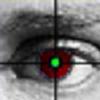http://www.etsimo.un.../eng/saturn.htm\
SATURN (excerpts)Saturn is the sixth planet from the Sun and is the second largest in the solar system with an equatorial diameter of 119,300 kilometers (74,130 miles). Much of what is known about the planet is due to the Voyager explorations in 1980-81. Saturn is visibly flattened at the poles, a result of the very fast rotation of the planet on its axis. Its day is 10 hours, 39 minutes long, and it takes 29.5 Earth years to revolve about the Sun. The atmosphere is primarily composed of hydrogen with small amounts of helium and methane. Saturn is the only planet less dense than water (about 30 percent less). In the unlikely event that a large enough ocean could be found, Saturn would float in it. Saturn's hazy yellow hue is marked by broad atmospheric banding similar to, but fainter than, that found on Jupiter.
The wind blows at high speeds on Saturn. Near the equator, it reaches velocities of 500 meters a second (1,100 miles an hour). The wind blows mostly in an easterly direction. The strongest winds are found near the equator and velocity falls off uniformly at higher latitudes. At latitudes greater than 35 degrees, winds alternate east and west as latitude increases.
Saturn's ring system makes the planet one of the most beautiful objects in the solar system. The rings are split into a number of different parts, which include the bright A and B rings and a fainter C ring. The ring system has various gaps. The most notable gap is the Cassini [kah-SEE-nee] Division, which separates the A and B rings. Giovanni Cassini discovered this division in 1675. The Encke [EN-kee] Division, which splits the A Ring, is named after Johann Encke, who discovered it in 1837. Space probes have shown that the main rings are really made up of a large number of narrow ringlets. The origin of the rings is obscure. It is thought that the rings may have been formed from larger moons that were shattered by impacts of comets and meteoroids. The ring composition is not known for certain, but the rings do show a significant amount of water. They may be composed of icebergs and/or snowballs from a few centimeters to a few meters in size. Much of the elaborate structure of some of the rings is due to the gravitational effects of nearby satellites. This phenomenon is demonstrated by the relationship between the F-ring and two small moons that shepherd the ring material.
Radial, spoke-like features in the broad B-ring were also found by the Voyagers. The features are believed to be composed of fine, dust-size particles. The spokes were observed to form and dissipate in the time-lapse images taken by the Voyagers. While electrostatic charging may create spokes by levitating dust particles above the ring, the exact cause of the formation of the spokes is not well understood.
Copyright © 1997-2001 by Calvin J. Hamilton










